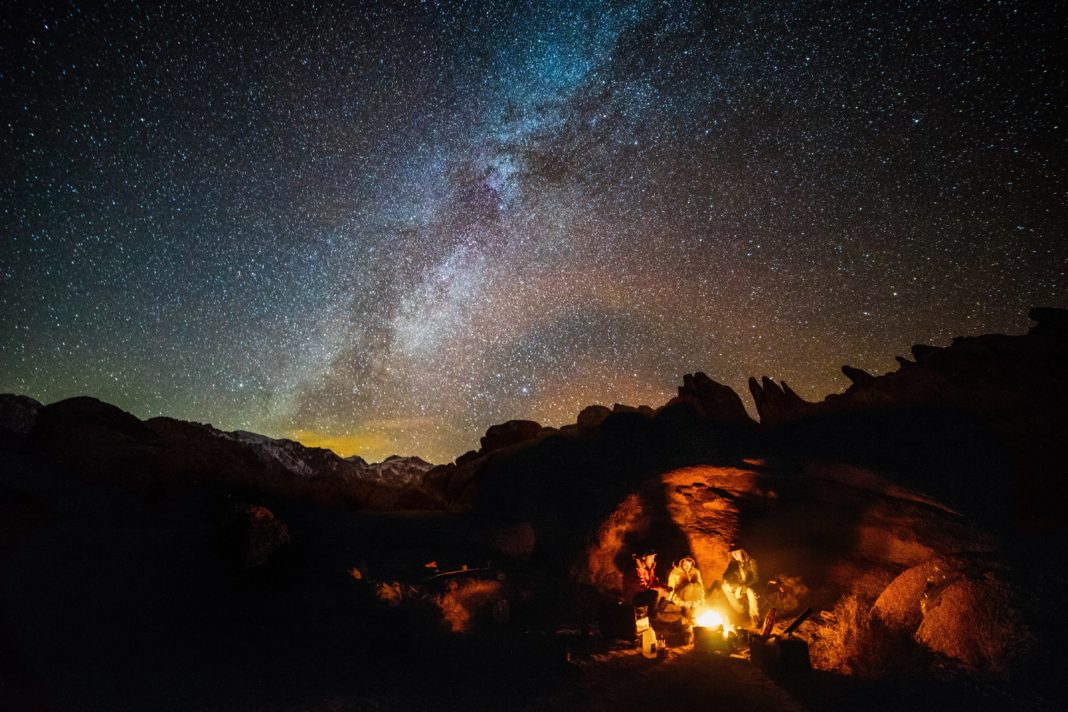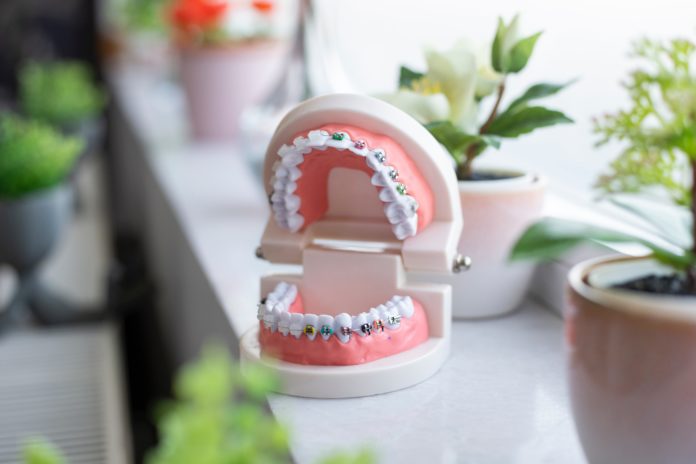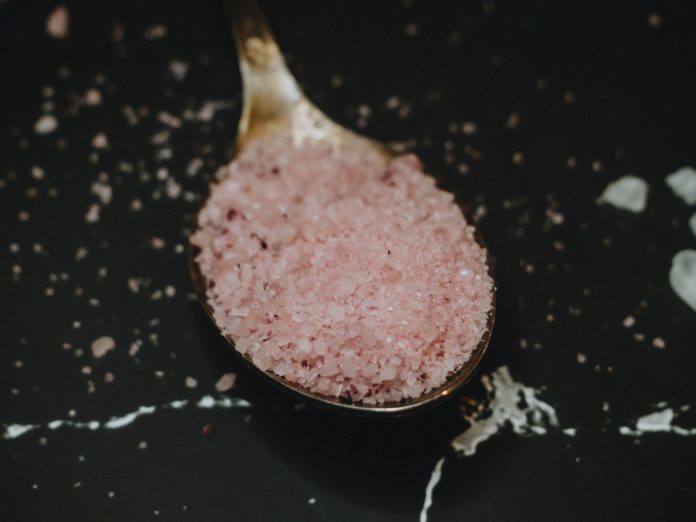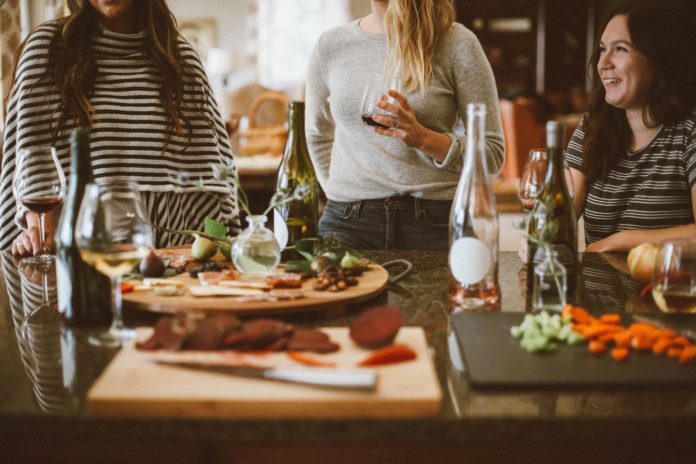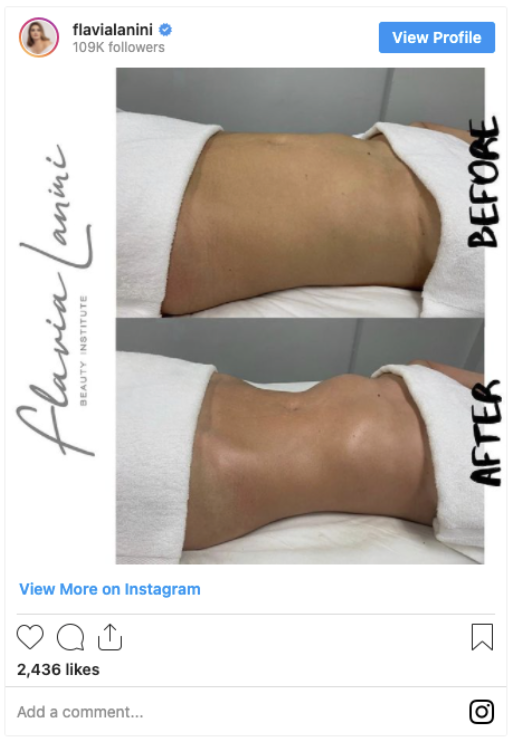Light. We need it to see after dark.
But is it making us fat, groggy, depressed, and more prone to cancer?
And not just blue light. We’re talking about ALL artificial light.
Picture your living room on a typical night. Bright screens, ceiling lights, floor lamps…
Compare that to the photo above.
Your home’s a little blinding by comparison, no?
Until about 140 years ago, humans were only exposed to bright light from the sun.
After sunset, it was nothing but moonlight, firelight or candlelight. Then came the lightbulb.
Now, our evenings are lit up like Christmas trees.
So how do our bodies feel about all this unnatural nighttime light?
What We Know
From hunger to hormones, your body functions on cycles. And they’re all tied to one:
It’s called your sleep/wake cycle and it’s linked to light exposure.¹
See, when the sun sets, your body is programmed to do some cool things to prepare for rest:
— hunger goes away
— muscles relax
— metabolism slows
— your body temperature drops
— melatonin rises
Those are all cued by the absence of light.
So what happens when we’re exposed to artificial light at night?
Light exposure during the evening can confuse your internal clock and make your body want to go to sleep later than it normally would.2
Specifically, it delays melatonin production (the hormone that makes you tired).3
Studies show that a mere 1-hour delay of melatonin production can negatively affect performance⁴, alertness⁵, and even overall well-being⁶.
See, light is a powerful biological cue.
When your sleep/wake cycle gets confused from bright light at the wrong times, it may have serious health consequences like cognitive impairment, metabolic issues, depression, weight gain and more.7,8,9
It can affect sleep quality, too, making it more shallow and less restorative.10 That’s why people who live near lots of outdoor lights are more likely to have trouble sleeping.11
What We’re Still Learning
Lately, there’s been a lot of buzz about cutting back on blue light.
But, given all that science above, doesn’t it seem weird to you that no one talks about turning down the white lights too?
Our beloved lightbulb might be getting off on a technicality:
A lot of studies link nighttime light exposure to cancer, diabetes and heart disease but these studies don’t prove that the light actually causes those conditions.12 (A link doesn’t imply causation.)
Maybe we need more studies. Or maybe we need to pay more attention tostudies that show what happens when we turn off the lights…
Just one weekend of camping can massively shift your internal clock (nearly an hour and a half!) closer to where it should be.13
The Bottom Line
When it’s light outside, your body should want to be awake. When it’s dark, it should want to rest.
This natural sleep/wake cycle might be getting messed up by too much artificial light. That light has also been linked to harmful health effects like weight gain, depression, and memory problems.
Feeling inspired to bring your lighting habits more in line with nature? Here’s what to aim for:
| First thing in the morning | Kickstart your internal clock with 5-10 minutes of bright morning light. This will also help reset a disrupted sleep/wake cycle. Try a morning walk or sit outside while sipping your tea. |
| During the day | You want as much exposure to natural light as possible. Spending a few hours in 600-10,000 lux is ideal for optimal sleep/wake cycle function. A sunny day is 300 times brighter than most offices! Try putting your desk near a window. |
| After sunset | Aim for firelight simulation. Dim your lights and turn off your screens. Try using candlelight or dimmed red and yellow bulbs. |
| While sleeping | Total darkness is best! As little as 10 lux has been shown to disturb sleep (that’s the brightness of an urban street at night). |
How Do I Get Started?
We’re all different, so we’ve divided some action steps into varying levels of commitment for you:
| Toes In |
😴 Pick up a soft, comfy sleep mask. ☀️ Add 5-10min of natural daylight to your morning routine. It can be a quick walk, tea on your patio, or even sitting in that warm sunbeam by your window. 🏮 Using nightlights to navigate to the bathroom? Switch to orange or red nightlights. |
| Waist Deep |
🚦 If streetlight seeps into your bedroom, invest in some blackout curtains (and maybe a sunrise simulating alarm clock to help you awaken more naturally). 📖 Commit to turning off your screens 1-2hrs before bedtime. Read or call a friend instead! 🕯️ For one week, try using only candlelight after sunset and see how you feel. |
| Full Immersion |
🛋️ Swap your home lighting for smart bulbs that you can dim (and change colors!) with an app. 💡 Commit to using only low-watt bulbs or candlelight after the sun has set. ⛺ Sleep cycle way out of whack? Go camping! When you’re exposed only to natural light, your internal clock will sync up with sunrise and sunset. |
